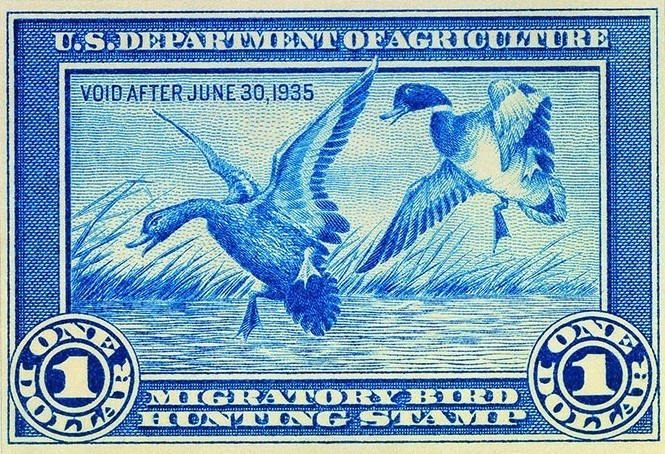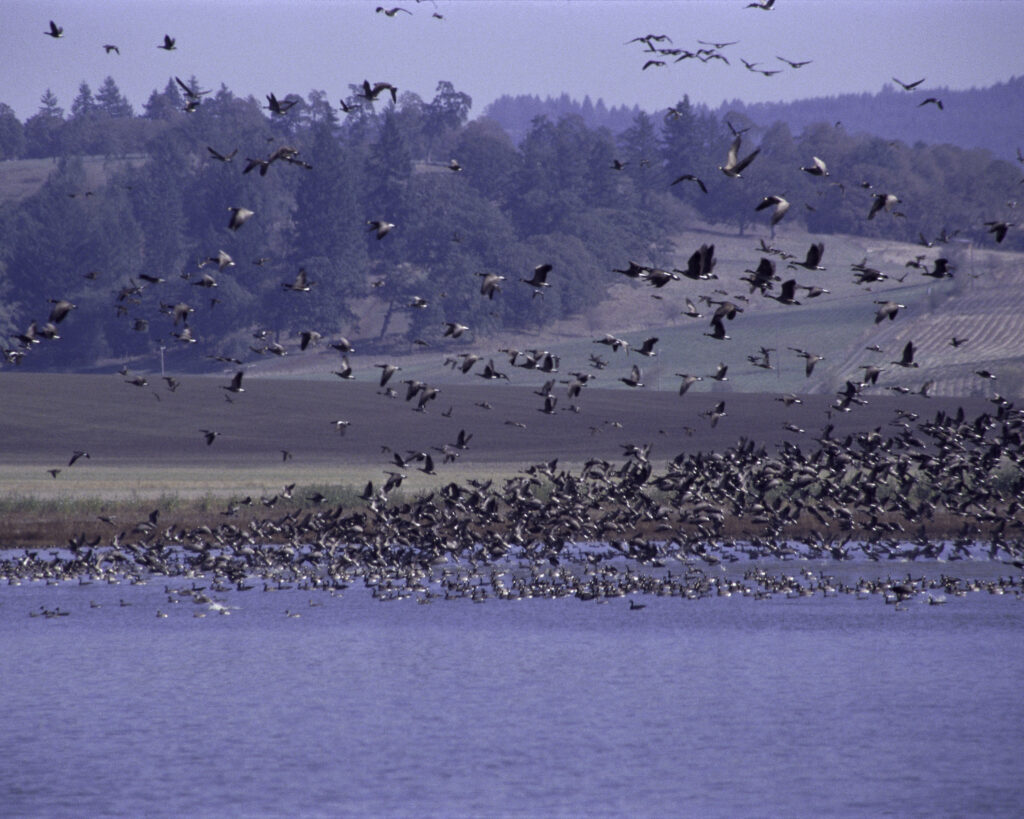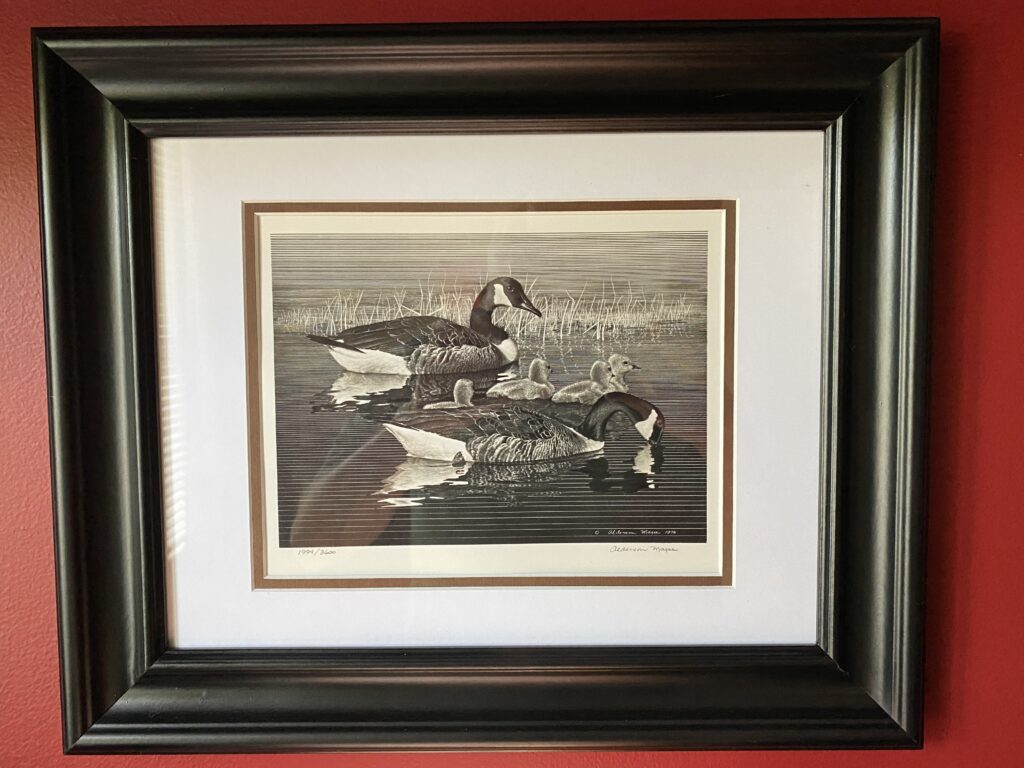The Duck Stamp—actually the “Migratory Bird Hunting and Conservation Stamp”—came into force on July 1, 1934. All hunters of migratory waterfowl must purchase and carry a Duck Stamp in order to hunt legally in the United States.

The Duck Stamp was one solution to the deteriorating condition of waterfowl habitat during the first decades of the 20th Century. Conservationists finally convinced the federal government to provide a permanent source of funds for habitat protection and restoration in the form of a “revenue stamp.” The first duck stamp, required for the 1934-1935 hunting season, cost $1. The stamp featured a pair of Mallard Ducks landing in a marsh. It was drawn by Ding Darling, then the Director of the Biological Survey (today known as the U.S. Fish and Wildlife Service).

Darling’s career, before and after his stint with the government, was as an editorial cartoonist with the Des Moines (Iowa) Register and Tribune newspaper. He was an ardent conservationist, however, and an out-spoken critic of President Franklin Roosevelt’s conservation policies. Roosevelt coerced Darling to come to Washington to see if he could do a better job running the nation’s wildlife programs. Darling took the job, lasting for only a brief 22 months. But during that time he became known as “the best friend a duck ever had” (read more about Darling here).
The Duck Stamp is proof of Darling’s effectiveness. The first year, about 600,000 stamps were sold; today about 1.7 million are sold annually. An amazing 98% of the stamp revenue goes directly to conservation, a total of over $800 million since 1934 (credit for the program’s efficiency goes to Ms. Suzanne Fellows, who runs the entire Duck Stamp program almost by herself). More than 5.7 million acres of wetlands have been purchased or restored using Duck Stamp funds (learn about the first National Wildlife Refuge here. The idea of using revenue stamps for conservation has spread across the nation and world. More than 1000 state, local and tribal stamps have been issued in the U.S. alone. Canada, Mexico, New Zealand, Argentina, Belgium, Australia, Russia and the U.K. all issue duck stamps.

Along with their conservation value, the stamps themselves have become an artistic and collecting phenomenon. The stamp is the longest running stamp series in U.S. history. Since 1949, the artwork for the stamp has been selected through a national art contest—the only art competition of its kind run by the federal government. The nation’s top wildlife artists vie for the honor of painting the winning entry each year. Begun in 1989, a Junior Duck Stamp Program uses art as a stimulus to interest elementary school students in conservation. The Smithsonian Institution’s Postal Museum has a continuing exhibit of Duck Stamps, and duck stamp aficionado’s have their own collector’s society.

References:
Brookman Stamps. History of the Migratory Bird Hunting Stamp Act. Available at: http://www.brookmanstamps.com/Netcat/federal/History.htm. Accessed June 28, 2017.
Smithsonian National Postal Museum. The Jeanette C. Rudy Duck Stamp Collection. Available at: https://arago.si.edu/exhibit_369.html. Accessed June 28, 2017.
U.S. Fish and Wildlife Service. Duck Stamps Dollars at Work. Available at: https://www.fws.gov/birds/get-involved/duck-stamp/duck-stamp-dollars-at-work.php. Accessed June 28, 2017.
U.S. Fish and Wildlife Service. History of the Federal Duck Stamp. Available at: https://www.fws.gov/birds/get-involved/duck-stamp/history-of-the-federal-duck-stamp.php. Accessed June 28, 2017.
